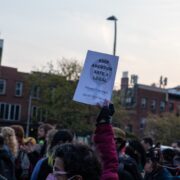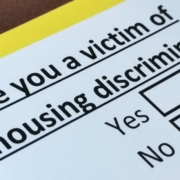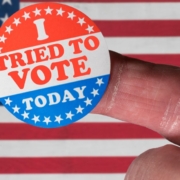Keep Them Home: Why Biden Must Grant Clemency to Everyone on CARES Act Home Confinement
By Tena-Lesly Reid, Civil Rights
In April 2020, then-Attorney General William Barr directed the Federal Bureau of Prisons (BOP) under the CARES Act to reduce the number of people in federal prisons. The BOP proceeded to create stringent criteria to determine who would be released from prison and placed under home confinement during the national emergency order. This determination was based on a culmination of extensive factors such as: age, security classification, whether they’ve served a specific percentage of their sentence, and whether they had previous health conditions.
Despite already withstanding comprehensive assessments in order to be eligible for home confinement, those who were selected are currently at risk of returning to prison. Since the national emergency order is expected to end on January 16, 2022, approximately 4,400 incarcerated people — unless the emergency order is renewed — are at risk of returning to federal prison after living with their loved ones under home confinement for more than a year. In September, the Biden administration began the clemency process for those who are under home confinement by asking certain people to submit commutation applications. The administration has limited eligibility to those with previous drug offenses with four or fewer years left in their sentence. According to the Justice Department and the White House, they are unaware of how many people fall into this category or if they will expand eligibility.
Home confinement undoubtedly saved several lives throughout the pandemic, as jails and prisons became hotspots for COVID-19. And since all of these people already withstood strict screenings to be eligible for home confinement in the first place, there is no public safety benefit to reincarcerating them. Moreover, BOP Director Michael Carvajal testified in April that only three people of the nearly 24,000 sent to home confinement have returned to prison because of new criminal conduct, and 148 returned to BOP custody because of technical violations concerning their release. These minor recidivism incidents indicate that the department should expand home confinement alternatives in the future, not undermine them.
Let’s be clear: Subjecting justice-involved people to further arbitrary scrutiny is unnecessary and not worth potentially separating them from their families, communities, and jobs. That’s why their ability to stay under home confinement should not hinge on clearing further administrative hurdles or proof that they deserve to stay with their families in an unprecedented and unpredictable time.
Thousands of people will be forced to return to overcrowded federal prisons at the end of the pandemic unless this administration takes immediate action.
We urge @POTUS to grant clemency to everyone on CARES Act home confinement to ensure families stay together. #KeepThemHome pic.twitter.com/cEMVd7eK7r
— The Leadership Conference (@civilrightsorg) November 23, 2021
While criminal-legal system reform advocates continue to push for more clarity and secure safety for people under home confinement, we should also ask: What is “home” to them? Where do they rest their heads after completing their sentence?
For people with close loved ones, they can be surrounded by family and friends. For others, it may mean staying at federal halfway houses for a short period of time before they’re supposed to move out. Similar to the uncertain fates of those under the CARES Act, formerly incarcerated people face the reality that “home” isn’t a guarantee.
As much as we call on the Biden administration to allow all incarcerated people under the CARES Act to remain under home confinement, much more should also be done for when they reenter society and seek increasingly limited stable housing. In fact, since 2017 the BOP has closed down 16 federal halfway houses, losing up to 400 potential beds. This scarcity is also prevalent in affordable permanent housing options, where formerly incarcerated people are 10 times more likely to face homelessness than the general population. According to a 2018 report from the Coalition for the Homeless, in New York City in particular, more than 54 percent of returning citizens become part of the city’s shelter system directly after their incarceration. These statistics are largely due to the lack of professional references, large security deposits, and background check requirements for potential tenants.
Unregulated background checks also dramatically restrict the employment opportunities of formerly incarcerated people. More than 600,000 returning citizens and 9 million who leave local jails must come to terms with more than 44,000 federal, state, and local restrictions to obtain stable employment, services, and public benefits that would allow them to be more economically secure. Additionally, many statutes prevent returning citizens from entering specific jobs notwithstanding mitigating factors and despite the fact that their particular convictions aren’t related to their job performance.
This is why it’s crucial not only for the Biden administration to allow incarcerated people to maintain the stability they’ve gained during home confinement, but also to consider long-term reentry plans for returning citizens that would provide future housing security and a fair chance at employment.
In the words of Franklin Delano Roosevelt, “True individual freedom cannot exist without economic security and independence.” Breaking down these barriers to reentry is vital to ensuring that released individuals are truly free, economically secure, and can fully participate in our society.












Leave a Reply
Want to join the discussion?Feel free to contribute!